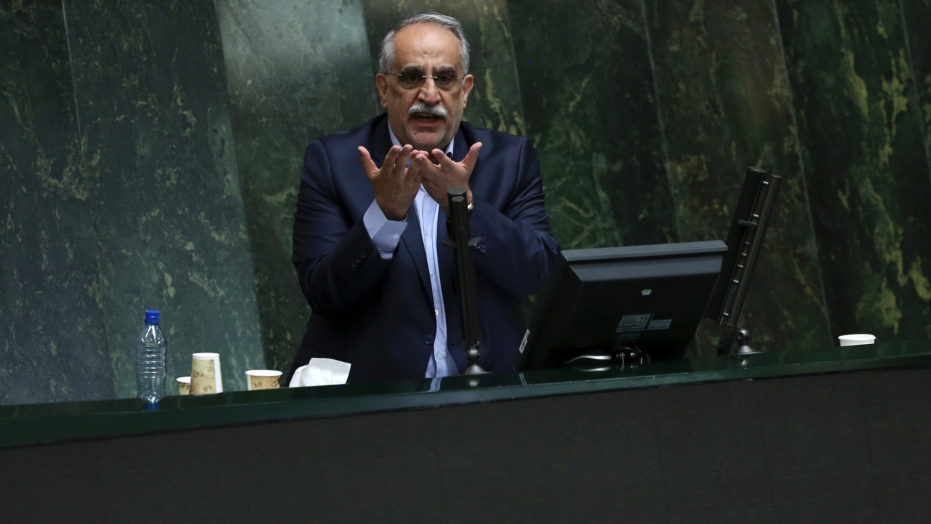
The mullahs in Tehran continued to struggle with the fallout from re-imposed economic sanctions by the Trump administration with its withdrawal from the Iran nuclear deal, as well as mounting pressure from demonstrations and protests enveloping the country as Iranians demand relief from a death spiral of an economy and national currency.
Internal dissent has festered into open chaos as the Iranian parliament acted to remove Hassan Rouhani’s beleaguered finance minister from office in a largely symbolic act to show frustrated Iranians the regime was doing something to fix their problems, although it’s doubtful any Iranian honestly believed that fiction.
The parliament backed the removal from office of Masoud Karbasian, minister of finance and economic affairs, by 137 votes to 121 against, state media said.
The sacking was the latest in a continuing shakeup of top economic personnel. In early August Iranian lawmakers voted out the minister of labor and last month Rouhani replaced the head of the central bank.
“(America’s) focus is on a psychological war against Iran and its business partners,” Foreign Minister Mohammad Javad Zarif said on Sunday, according to the Tasnim news agency.
Zarif’s statement smacks of the desperation the regime is feeling as it tries for any rhetorical volley in an effort to find anything that might stick on the Trump administration in terms of effective messaging.
The fact there has been a wholesale pullout of foreign firms from contracts in Iran such as Total, Peugeot and other leading names demonstrates just how ineffective the regime has been in the face of potential secondary economic sanctions from the U.S. that could punish anyone doing business with Iran.
One of the key requirements by the Trump administration was for the Iranian regime to rein in its support of the Assad regime and stop involving itself militarily in Syria, but the Iranian regime’s top defense official was in Damascus this weekend meeting with Bashar al-Assad and pledged to continue supporting the regime.
Iranian Defense Minister Amir Hatami said that Iran would help expand Syria’s military arsenal.
“The Islamic Republic has high capabilities in the area of defense and can help Syria in expanding their military equipment,” he said, according to ISNA.
U.S. National Security Adviser John Bolton said last week that Iran should remove its forces from Syria.
Senior Iranian officials have said their military presence in Syria is at the invitation of the Assad government and they have no immediate plans to withdraw.
More than 1,000 Iranians, including senior members of the Revolutionary Guards, have been killed in Syria since 2012.
The Guards initially kept quiet about their role in the Syria conflict. But in recent years, as casualties have mounted, they have been more outspoken about their engagement, framing it as an existential struggle against the Sunni Muslim fighters of Islamic State.
In reality
The end result of that military intervention was over half a million men, women and children killed and nearly five million refugees flooding into Europe as well as the rise of ISIS and years of terrorist attacks on Europe, Asia, the U.S. and Canada.
While there is much speculation about Rouhani’s future, the truth is that he is largely irrelevant since top mullah Ali Khamenei remains the firm head of the regime both spiritually and practically. Rouhani’s ultimate utility will be as a scapegoat to protect Khamenei and the other mullahs from the wrath of the Iranian people.
Parliament members have also called for the impeachment of the education and interior ministers, and others have said the industry and housing ministers should be impeached if Rouhani doesn’t shake up his economic team himself, according to the Wall Street Journal.
Iran’s economic outlook has darkened in recent months. Analysts at BMI Research in London project economic growth to slow to 1.8% this year, followed by a contraction of more than 4% next year.
Of course, the Iran lobby, especially the National Iranian American Council, are trying to make the argument that Rouhani’s downfall would only leave the regime in the hands of hardliners, but that message misses the entire fact that since Rouhani’s election which was manipulated by Khamenei, the hardliners have never loosened their grip on power.
The Iran nuclear deal was solely designed to get Iran desperately needed cash to save its military intervention in Syria and allow it to rearm and rebuild its depleted military. The fact that Iran’s economy has tanked is a result of that diversion of much-needed capital from the Iranian people to the military.
It’s no wonder why protesting Iranians have chanted since last December to get out of Syria and stop supporting Hezbollah in Lebanon.
The NIAC posted a roundup of news items in an effort to try and portray how Iran is slipping into the grip of hardliners because of the new economic sanctions, but the past three years prove how silly that idea is since the regime has flexed its military muscle throughout the Middle East while cracking down harshly on dissenters at home.
These are not the actions of a “moderate” government as the NIAC would have you believe. What we may be seeing those are the desperate thrashings of a regime being crushed from all sides.